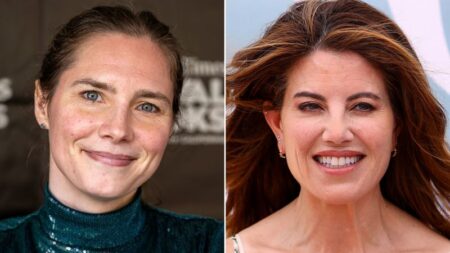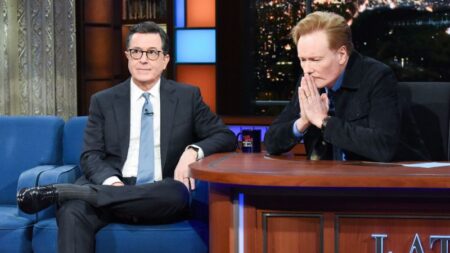The ongoing legal skirmish between actor Justin Baldoni and his co-star Blake Lively has attracted significant media attention, with allegations of sexual harassment and a counter lawsuit spearheaded by Baldoni. Following Lively’s accusations against Baldoni, which surfaced late last year, Baldoni filed a libel suit against The New York Times, asserting that an article published by the newspaper was filled with “inaccuracies, misrepresentations, and omissions.” According to Baldoni, the Times relied heavily on what he described as Lively’s “self-serving narrative” without adequately investigating or vetting the claims.
In December, Lively took a significant step by filing a complaint with the California Civil Rights Department, alleging that Baldoni harassed her during the production of their film “It Ends With Us.” In this detailed complaint, Lively accused Baldoni of retaliation after she voiced her concerns about inappropriate behavior on set. She claimed that after her complaints, Baldoni and his team leaked damaging information with the aim of tarnishing her professional image, leading to broader repercussions within Hollywood.
The situation escalated when The New York Times reported on Lively’s allegations, publishing a headline-grabbing article titled “‘We Can Bury Anyone’: Inside a Hollywood Smear Machine” on December 21. This piece, which spanned 4,000 words, contained sensitive details from Lively’s complaint, traditionally kept secret. The significant exposure resulted in Baldoni’s swift fall from grace; he was dropped by his talent agency, WME, which also represents Lively and her husband, Ryan Reynolds. Lively, meanwhile, garnered support from major industry entities including SAG-AFTRA and Sony Pictures, both publicly backing her claims.
Baldoni, in reaction to Lively’s complaints and the media coverage, claimed that Lively fabricated the sexual harassment allegations to seize control of the film’s narrative while also attempting to rehabilitate her public image through sensational accusations in The New York Times. His lawsuit paints a picture of calculated manipulation, articulating that Lively’s strategy was both opportunistic and self-serving. The legal complaint states that Lively’s actions were explicitly intended to distract from her personal and professional challenges, thus branding the entire situation unconscionable.
The crux of Baldoni’s lawsuit is grounded in assertions against The New York Times, which he accuses of failing in its “journalistic integrity” by basing its reporting predominantly on Lively’s unsubstantiated claims, ignoring a plethora of evidence which contradicts her narrative. The New York Times has responded robustly, with a spokesperson affirming the article’s meticulous reporting and declaring intent to vigorously defend against Baldoni’s lawsuit. The Times highlighted their reliance on a multitude of documents, including text messages and emails, that purportedly corroborate their reporting.
In a show of resilience, Lively’s legal team declared that Baldoni’s suit did not alter the validity of her allegations, as she shifted her legal strategy by filing a federal complaint on the very same day Baldoni initiated his lawsuit. Further entrenching the adversarial nature of this unfolding drama, Baldoni’s legal team alleges that the texts provided by Lively’s lawyers were “doctored and manipulated,” suggesting a conspiracy to undermine his credibility.
The dynamics surrounding this escalating confrontation have prompted both parties to exchange counterclaims, with considerable emphasis placed on the provenance of private communications. This entangled web became more convoluted with the introduction of another lawsuit, nudging the spotlight onto Baldoni’s former publicist regarding the origin of allegedly leaked texts.
At the heart of this conflict lies a disputed claim made by Lively that Baldoni and his collaborator, Jamey Heath, ambushed her in her private space during vulnerable moments, including instances where she was engaged in breastfeeding. Baldoni’s lawsuit ambitiously counters this assertion by referencing text exchanges that are claimed to demonstrate Lively’s prior invitation for professional collaboration, presenting a starkly different narrative.
As the legal battle unfolds, both sides firmly stand their ground, each accusing the other of conducting smear campaigns. The conflicting perspectives paint a vivid picture of a contentious environment in what was once a collaborative professional relationship, taking yet another turn as industry standards and personal reputations interweave. The scandal serves as a reflection on broader issues of accountability, media ethics, and the complex realities of celebrity interactions. The intertwining threads of allegations, lawsuits, and public relations stunts are set against the backdrop of Hollywood’s often tumultuous landscape, leaving observers to question the true extent of the narrative being spun.











